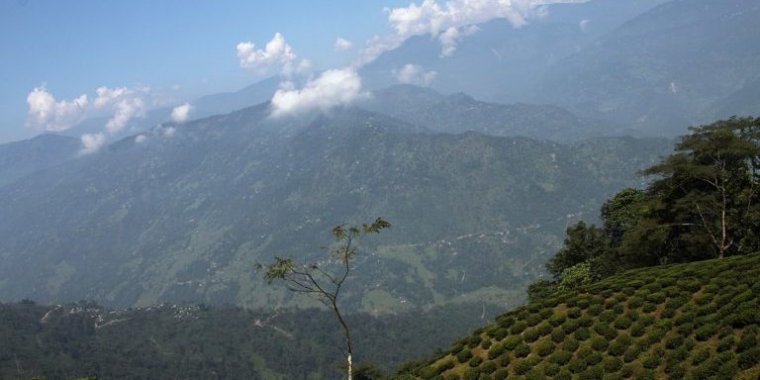| News / Science News |
Himalayan ‘aerosol factory’ influences global warming
The vast Himalayan region acts as an ‘aerosol factory’ contributing significantly to tropospheric aerosols that affect the balance between sunlight absorbed by the Earth and energy radiated back — the basis for the greenhouse effect that causes global warming, says a new study.

Himalayan foothills. Image credit: flowcomm
According to the study, up-valley winds bring vapours emitted by vegetation in the Himalayan foothills to higher altitudes. Along the way they turn into volatile compounds which rapidly form new aerosol particles that are transported into the troposphere, the lowest layer of the atmosphere where all weather occurs.
Poor understanding of aerosol particles in the atmosphere before industries were established globally has led to substantial uncertainty in man-made contribution to aerosol formation, the study said.
To address this issue researchers at the Institute for Atmospheric and Earth System Research (INAR), University of Helsinki, Finland, assessed new aerosol formation in pre-industrial-like conditions found at the Nepal Climate Observatory, Pyramid station, located 5,079 metres above sea level.
The Himalayan region pushes into the free troposphere large quantities of aerosol particles produced from organic or “biogenic” sources — but not man-made or “anthropogenic” pollutants, the researchers found. That makes aerosol production in the Himalayan region close to pre-industrial conditions where aerosols in the upper troposphere were mainly biogenic rather than anthropogenic.
“To understand climate, we need to understand all the components of the atmosphere before and after human industrialisation,” Federico Bianchi, associate professor, faculty of science, INAR, tells.
Josef Dommen, co-author of the study from Switzerland’s Paul Scherrer Institute, adds: “[The] source of particle formation and transport, [as unveiled in this study] can now be included in climate models and improve the climate simulation of pre-industrial times and, therefore, climate change predictions.”
Plants give off large quantities of gases such as isoprene and terpene, which are oxidised in the atmosphere, producing small quantities of very sticky molecules that bind together and form tiny aerosol particles, Dommen says, adding that aerosol particles can grow larger by condensation of other products of oxidation, and eventually turn into cloud condensation nuclei (small particles on which water vapour condenses).
“Such particles affect the climate directly by increasing the reflectivity of the atmosphere or they affect it indirectly by changing the properties of clouds, because they serve as cloud condensation nuclei,” Dommen tells.
The study is important for understanding atmospheric processes in the Himalayan region better, says Madan Sigdel of Nepal’s Tribhuvan University. “If the aerosol particles increase in the upper troposphere, it may reduce the warming rate, [and suppress] the radiative forcing (difference between sunlight absorbed by the Earth and the energy radiated back to space), changing the climate system. More cloud condensation nuclei form clouds with smaller droplets which may suppress the formation of [cloud] precipitation.” (SciDev.Net)
YOU MAY ALSO LIKE





